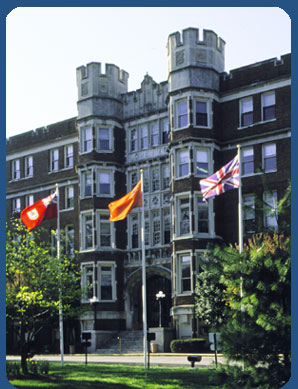were able to take their
experiences at Hull House and the University of Chicago, and apply them in
New York City at the Henry Street Ward settlement house.
As noted earlier, the work of the women in the CWSS were rooted in
various social theories. Jane Addam's based much of her thought of social
reform on her theory of social justice, explained as: "the understanding of
the individual as embodied, agentic, self-interested, sociable, and ethical
(Lengermann & Niebrugge, 1998: 242). From this theory, we can see how the
women involved in social reform, at both the state and national level, were
empowered by this positive view of the self in society. In addition to this
theory, the CWSS also borrowed heavily from the ideas of Marxist socialism.
This, in part, came from the influence of Florence Kelley, who had studied
socialism at the University of Zurich. What a majority of women believed
was: "economic class position as the main variable explaining the human
misery they saw around them, unfettered capitalist greed as the primary cause
of misery" (Lengermann & Niebrugge, 1998, pg. 242). This provided the
foundation of their work done in social reform. In addition, the work of the
CWSS in Chicago was embraced by many in society, as the CWSS continued to
organize systems to help the poor. But socialist thought was also scorned in
the United States. Oftentimes, this opposition created barriers for the
women involved in legislation to help disadvantaged groups.
The CWSS were not simply a group of social reformers, but a community of
social scientists insistent on providing empirical evidence to demonstrate
and support their theories concerning societal stress. Their methods were
wide, running the spectrum of techniques: from surveys, interviews, and field
observation to analysis of court records, voting records, and census data
(Lengermann & Niebrugge, 1998). The result of these practices was that: "The
Chicago Women's School of Sociology created many of the methodological and
data-gathering strategies that would by the 1930's become criteria--- of male
professionalized sociology" (Lengermann & Niebrugge, 1998: 253). In
addition, the collective work of these women in social reform later
influenced a majority of the policy included in the New Deal.
During the early years of the CWSS's work, the first psychology
laboratories were being set up around the United States. In fact, the
University of Chicago set up laboratories in 1893, under the direction of
Charles Augustus Strong. An overwhelming amount of these laboratories were
run by men, who clearly favored the presence of male scholars over women
scholars. If one considers these conditions, the significance of the CWSS's
contributions to social theory and reform are impressive, even if the
individuals who contributed to its body are virtually unknown. It has been
proposed: "when the vocational realities of women's lives are either ignored
or classified as exceptional, they are not able to function as models for the
next generations" (Stebner, 1997: 144). Although many do not know of the
CWSS's monumental contributions to government policy and social reform, they
are nonetheless living in a society of ideas and institutions patterned after
their theory.
Works Cited
- Lengermann, P. & Niebrugge-Brantley, J. (1998). The women founders:
sociology and social theory. The McGraw Hill Companies.
- Stebner, E. (1997). The women of Hull House: A study in spirituality,
vocation, and friendship. State University of New York Press.
Links
Back to Women's Page
